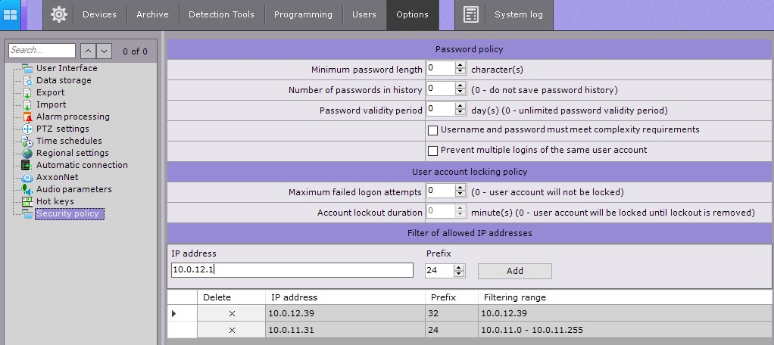Electrical Security
Zoobla One security policy ensures that no unauthorized persons can access the system.

When you start servers and clients, Axxon One automatically checks the digital signature for all executable files. If all files are in place and match their signatures, a “System integrity check passed successfully” record appears in the system log.
Otherwise, a “System integrity check failed” event is registered, and you can set the system to perform one of the pre-configured actions:


Axxon One security policy ensures that no unauthorized persons can access the system. The user security policy includes:
Each user-related event includes the user’s IP address. When accessing the server, the MAC address of the client computer is registered in the system event log. The Export Start event includes the username. You can set a range of permissible IP addresses for the client computers; users can also access the server with administrator confirmation.

AxxonNet cloud service connects to your Axxon One VMS servers via the HTTPS protocol using TLS encryption. No opening any ports or deploying other potentially vulnerable settings is needed, which ensures that your VMS does not become externally accessible. Transmitted video and other data are encrypted, which makes it impossible for unauthorized persons to access your information.
In AxxonNet, no user passwords are stored unencrypted (as cleartext), but password hashing is applied instead. When you enter your credentials to register in AxxonNet, the password is processed with a hashing algorithm, and only the hash sum is stored. When you enter your password to log in, the algorithm calculates its hash sum and compares it to the stored one to grant you access to the service. It is impossible to reconstruct a password based on the hash sum, so your vital data is inaccessible to attackers.

Axxon One can receive encrypted video streams from cameras. It supports the RTSPS protocol, and RTSP over HTTPS for ONVIF compliant devices. For transmitted video data, TLS encryption is supported.
